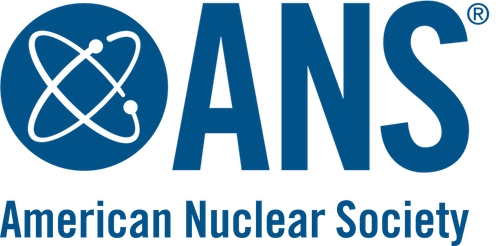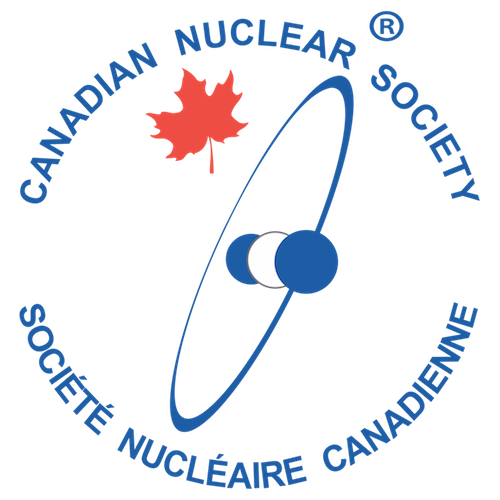Important Dates
Conference ended August 17, 2023
Plenary Speakers
Monday Opening Plenary
Dr. Florian Fichot, Institute of Radioprotection and Nuclear Safety
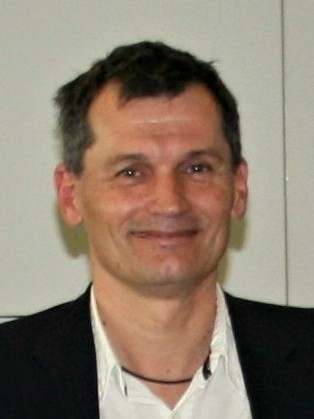 Florian Fichot is a research engineer and expert at the Institute of Radioprotection and Nuclear Safety (IRSN, France).
His expertise covers several areas related to the physical processes occurring in case of a severe accident in a nuclear power plant (core damage, reflooding, strategies for corium stabilization, etc.).
Florian Fichot is a research engineer and expert at the Institute of Radioprotection and Nuclear Safety (IRSN, France).
His expertise covers several areas related to the physical processes occurring in case of a severe accident in a nuclear power plant (core damage, reflooding, strategies for corium stabilization, etc.).
He graduated from Ecole Centrale Paris in 1989 and obtained a Ph.D. in Mechanical Engineering at Ecole Centrale Paris in 1994 on the topic of "Modelling of the ignition of a turbulent diffusion flame: Application to cryogenic rocket engines". He was a visiting scientist at the Jet Propulsion Laboratory of NASA, Pasadena (California).
He has been working at IRSN for almost 30 years, mostly developing physical models for industrial system codes (ICARE, ASTEC) and exploring some CFD methods for detailed modelling of corium behaviour (Cahn-Hilliard, Lattice-Boltzmann, …).
He has been involved in several international projects sponsored by OECD or EURATOM. He was recently coordinator of the H2020 European project IVMR about In-Vessel Retention for high power reactors.
He has contributed to more than 50 papers in journals and one chapter (In-vessel phenomena) of the book ‘Nuclear Safety in Light Water Reactors’ (published by Academic Press in 2012) and gives lectures organised by international organisations NUGENIA (EU), IAEA and INSTN.
Abstract:
Severe accidents in water-cooled reactors involve several coupled physical phenomena which make their numerical
simulation challenging and complex. The very high temperatures reached by the materials of the reactor core (above 1500
K and up to almost 3000 K) activate various chemical reactions with fast kinetics either between different core materials
or between metals and oxidizing gases (mainly steam). This paper makes a review of current or innovative simulation
methods applied to severe accident analusis. In particular, the numerical simulation of corium (the mixture of molten core
materials) is addressed through various aspects. Multi-species and multi-phases aspects have been dealt with a coupling to
thermochemical databases and Gibbs minimization solvers, either for averaged fluid models or for diffuse interface CFD
models. Spreading and solidification aspects have been addressed with various methods such as the moving particle semi-implicit
(MPS) or the Lattice-Boltzmann Method (LBM). Turbulence aspects are also a key issue for corium simulation
when it forms large pools, in particular in the lower plenum of the vessel (in-vessel retention strategy): this can be dealt
with DNS or LES up to a certain Rayleigh number or with RANS or effective diffusivity models for very high Rayleigh
number. Those simulation methods are described in the paper and the outcomes of the simulations for severe accident
analysis are discussed.
Prof. Tomasz Kozlowski, University of Illinois Urbana-Champaign
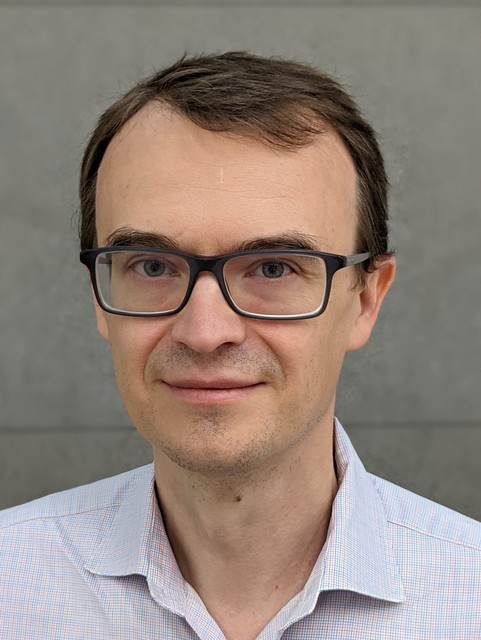 Prof. Tomasz Kozlowski earned his PhD in Nuclear Engineering from Purdue University in 2006. From 2009 to 2011 he was Assistant Professor at the Royal Institute of Technology, Nuclear Power Safety, Stockholm. In 2011 Tomasz joined the faculty of University of Illinois Urbana-Champaign, where he is currently Associate Professor and Associate Head for Undergraduate Programs in the Department of Nuclear, Plasma and Radiological Engineering.
Prof. Tomasz Kozlowski earned his PhD in Nuclear Engineering from Purdue University in 2006. From 2009 to 2011 he was Assistant Professor at the Royal Institute of Technology, Nuclear Power Safety, Stockholm. In 2011 Tomasz joined the faculty of University of Illinois Urbana-Champaign, where he is currently Associate Professor and Associate Head for Undergraduate Programs in the Department of Nuclear, Plasma and Radiological Engineering.
Abstract:
I will present a review of methods for sensitivity and uncertainty analysis of modeling and simulation of nuclear reactors, particularly core physics, thermal-hydraulics, and fuel performance. Both deterministic and stochastic methods will be discussed in terms of their relative advantages and disadvantages. A recent advances in adjoint-based sensitivity analysis which is commonly used to perform nuclear data sensitivity analysis was its extension to high-order adjoint and thermal-hydraulics. In addition, the methods for data assimilation and inverse uncertainty quantification of nuclear data and physical models will be discussed. A comprehensive review of approaches to conduct the inverse problem, used to quantify input uncertainty, will be presented. In addition, a target accuracy assessment will be described, which aims to determine the key model input parameters (e.g., cross-sections) that need further improvements and more experiments to ensure the validity of the current models, particularly for future reactor designs. Finally, I will conclude with I consider the most important achievement of the last few years: theoretically complete sources of uncertainty.
Dr. Lefteri Tsoukalas, Purdue University
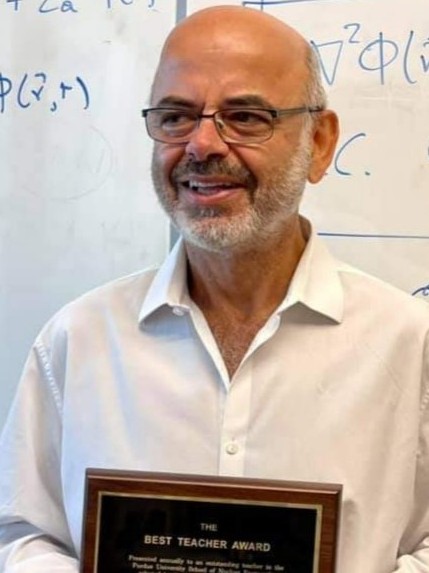 Lefteri H. Tsoukalas is the founding director of Purdue’s Center for Intelligent Energy Systems (CiENS) and has over three decades of experience in developing AI/ML methodologies for nuclear energy systems with nearly 300 publications including the textbook titled “Fuzzy and Neural Approaches in Engineering,” (co-authored with Robert E. Uhrig, Wiley, 1997) and the textbook “Fuzzy Logic: Applications in Artificial Intelligence, Big Data, and Machine Learning, (McGraw Hill, 2023).
Dr. Tsoukalas has served in several advisory and consulting capacities for the OECD-NEA, the International Atomic Energy Agency (IAEA); the Agency for Science, Technology and Research (ASTAR) of the Government of Singapore; and the US Department of Energy. Dr. Tsoukalas is a Fellow of the American Nuclear Society and the 2009 recipient of the Humboldt Prize, Germany’s highest honor for international scientists.
Lefteri H. Tsoukalas is the founding director of Purdue’s Center for Intelligent Energy Systems (CiENS) and has over three decades of experience in developing AI/ML methodologies for nuclear energy systems with nearly 300 publications including the textbook titled “Fuzzy and Neural Approaches in Engineering,” (co-authored with Robert E. Uhrig, Wiley, 1997) and the textbook “Fuzzy Logic: Applications in Artificial Intelligence, Big Data, and Machine Learning, (McGraw Hill, 2023).
Dr. Tsoukalas has served in several advisory and consulting capacities for the OECD-NEA, the International Atomic Energy Agency (IAEA); the Agency for Science, Technology and Research (ASTAR) of the Government of Singapore; and the US Department of Energy. Dr. Tsoukalas is a Fellow of the American Nuclear Society and the 2009 recipient of the Humboldt Prize, Germany’s highest honor for international scientists.
Abstract:
Physics informed neural networks (PINNs) use AI learning to provide an alternative approach for numerical solution of differential equations. Applications of PINNs in monitoring of reactor transients requires near real-time model performance. However, as with all machine learning models, development of a PINN involves laborious and time-consuming training. Can AI help us accelerate and possibly transfer such learning? The conventional view of AI as a property of machines must be revised to allow for AI that is, actionable, interpretable, and more pragmatically transferable. In this way, AI becomes a useful feature of the human-machine communication. For this view to have merit, intelligence must be observed and judged against a social linguistic background and the intelligence of a system ought to be judged based on tasks accomplished, along the lines of the famous Turing Test. Turing gave us the basis for judging intelligence and therefore learning in an actionable, interpretable, and transferable way. We will examine these issues through a digital twin for Purdue’s reactor, the PUR-1, the first fully digital I&C reactor licensed in the US.
Prof. Akio Yamamoto, Nagoya University
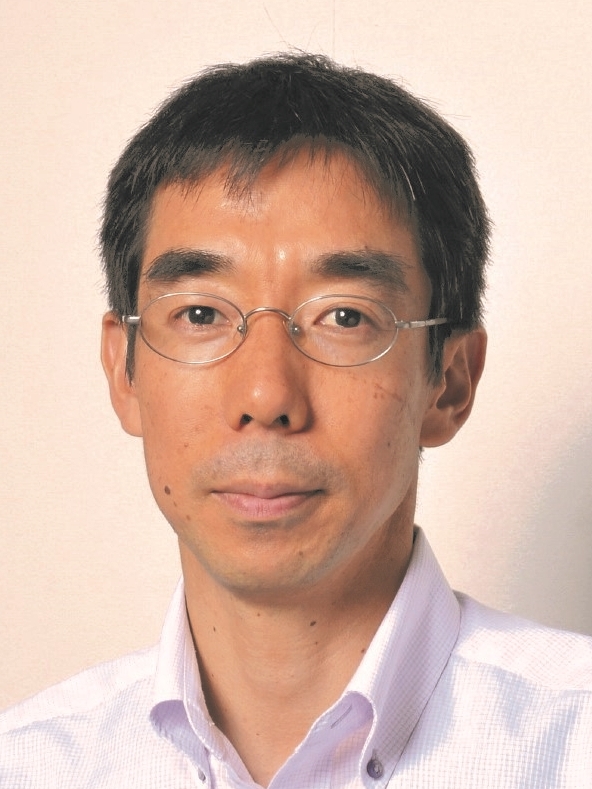 Professor, Graduate School of Engineering, Nagoya University, Japan. BS, Nuclear Engineering, Kyoto University, 1987, on transport theory based on spherical harmonics method, MS, Nuclear Engineering, Kyoto University, 1989, on critical experiments and analyses of high-conversion LWRs. Ph.D., Energy Science, Kyoto University, 1998, on loading pattern optimization methods for LWRs. Nuclear Fuel Industries, Ltd., Japan, 1989-2003, in charge of in-core fuel management and related methodology development for commercial LWRs.
Professor, Graduate School of Engineering, Nagoya University, Japan. BS, Nuclear Engineering, Kyoto University, 1987, on transport theory based on spherical harmonics method, MS, Nuclear Engineering, Kyoto University, 1989, on critical experiments and analyses of high-conversion LWRs. Ph.D., Energy Science, Kyoto University, 1998, on loading pattern optimization methods for LWRs. Nuclear Fuel Industries, Ltd., Japan, 1989-2003, in charge of in-core fuel management and related methodology development for commercial LWRs.
In his current position, he is focusing on the development of advanced nuclear design methods for current and advanced reactors, cross section processing, lattice physics methods, resonance calculations, sensitivity analysis/uncertainty quantification, cross section adjustment, reduced order modeling, large-scale simulations, in-core fuel optimizations, risk margin characterization of nuclear power plants, education of reactor physics, and reactor safety.
He engages in various activities of the Nuclear Regulation Authority (NRA), a team member of new regulatory requirements for light water reactors, new regulatory requirements for nuclear fuel facilities, commission on supervision and evaluation of the Fukushima Daiichi NPPs, and the nuclear fuel safety examination committee. He is the chair of the nuclear fuel safety examination committee of NRA.
Member of Atomic Energy Society of Japan (AESJ) and a Fellow of American Nuclear Society (ANS). Board of Director of ANS (2018-2021). Past chair of the computational science division and the reactor physics division of AESJ. Current chair of the nuclear safety division of AESJ and the standard committee of AESJ. Technical program chair of PHYSOR2014 at Kyoto, Japan.
Abstract:
We have been enjoying significant advances in reactor simulation methods thanks to the many improvements and progress in computer architectures (hardware) and numerical algorithms (software). However, we still face many limitations and restrictions from hardware and software. In my talk, I will discuss some of the open issues in the simulation methods for nuclear reactors, mainly in the field of reactor physics.
Thursday Closing Plenary
Prof. Liangzhi Cao, Xi'an Jiaotong University
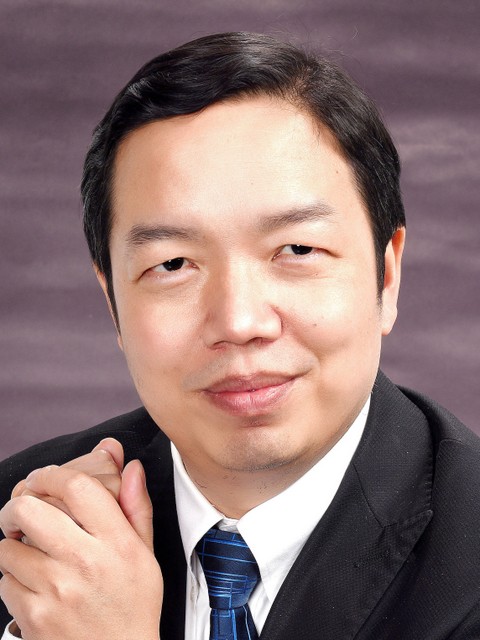 Prof. Liangzhi Cao earned his PhD in Nuclear Engineering from Xi’an Jiaotong University (XJTU) in 2005, after which he visited KAIST in Korea, the University of Tokyo in Japan and the University of Michigan in USA. Since 2008 he has been working in XJTU as an associate professor (prompted to full professor in 2014) in the School of Nuclear Science and Technology. Published more than 200 peer-reviewed journal papers and 3 monographs (two in English). Professor Cao is serving as the Executive Editor of Annals of Nuclear Energy, Associate Editor of ASME J. of Nuclear Engineering & Radiation Science. He won a Second Prize of National Technological Invention of China in 2019. He was awarded as the Long Service Award for ICONE in 2021. His main research interests are advanced nuclear reactor system R&D and its high fidelity numerical simulation.
Prof. Liangzhi Cao earned his PhD in Nuclear Engineering from Xi’an Jiaotong University (XJTU) in 2005, after which he visited KAIST in Korea, the University of Tokyo in Japan and the University of Michigan in USA. Since 2008 he has been working in XJTU as an associate professor (prompted to full professor in 2014) in the School of Nuclear Science and Technology. Published more than 200 peer-reviewed journal papers and 3 monographs (two in English). Professor Cao is serving as the Executive Editor of Annals of Nuclear Energy, Associate Editor of ASME J. of Nuclear Engineering & Radiation Science. He won a Second Prize of National Technological Invention of China in 2019. He was awarded as the Long Service Award for ICONE in 2021. His main research interests are advanced nuclear reactor system R&D and its high fidelity numerical simulation.
Abstract:
Driven by the high-speed development of nuclear energy installation in China, the demand for software that can model and simulate different type of nuclear reactors with high precision and high efficiency are becoming more and more strong. During the past years, many institutions and universities have devoted much efforts on developing various software for high fidelity modeling and simulation of power reactors based on both deterministic and Monte Carlo method. Several projects were launched from both government and industrial company to support the software development. This plenary talk will mainly focus on one of those efforts which was accomplished by Xi’an Jiaotong University (XJTU), Institute of Applied Physics and Computational Mathematics (IAPCM), and Shanghai Nuclear Engineering Research and Design Institute (SNERDI). A so-called numerical reactor was developed with neutronics, thermal-hydraulics, fuel performance analysis for CAP1400, a Chinese version advanced PWR, which is under construction in Shandong Province. The numerical results for AP1000 have been compared with the measurements from Sanmen nuclear power plant and good agreements were achieved. The predicted results of CAP1400 will be used for the startup of the first unit of CAP1400. Besides, some other projects on high fidelity numerical reactors in China will also be introduced in the talk.
Dr. Jess C. Gehin, Idaho National Laboratory
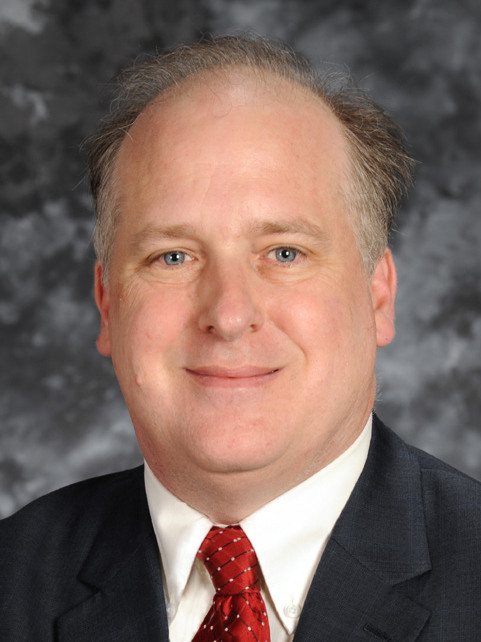 Jess Gehin serves as Idaho National Laboratory associate laboratory
director for the Nuclear Science & Technology (NS&T) Directorate. He
became NS&T associate laboratory director in March 2021 after serving
as chief scientist for the directorate, and has been with the laboratory
since 2018.
Jess Gehin serves as Idaho National Laboratory associate laboratory
director for the Nuclear Science & Technology (NS&T) Directorate. He
became NS&T associate laboratory director in March 2021 after serving
as chief scientist for the directorate, and has been with the laboratory
since 2018.
During his 28-year career, he has built national strategies and priorities for
nuclear energy, led complex projects and organizations, and developed
strong relationships with senior leaders within INL, DOE and federal
sponsors, and other laboratories, companies and universities. He is well
known and respected throughout the nuclear energy community for his
deep technical knowledge, insight, integrity and collaboration. In support
of the DOE Office of Nuclear Energy, he served as the national technical
director for the DOE Microreactor Program, and while at ORNL, served as
director of the Consortium for Advanced Simulation of Light Water Reactors.
He worked to impact INL by expanding NS&T’s strategic direction through a
high-performing organization. He helped develop and establish key projects
to build advanced reactors at INL such as the Department of Defense’s
demonstration microreactor Project Pele, and the Microreactor Applications
Research Validation and Evaluation (MARVEL) Project, which will be the
first new reactor developed and started up at INL in over 40 years. He was
instrumental in establishing INL’s scientific computing organization and
served as its interim director.
Previously, he held research and leadership positions at Oak Ridge
National Laboratory in nuclear reactor core physics, reactor core and
system technologies, reactor modeling and simulation, and fuel cycle
reactor applications. His academic experience includes positions as
associate professor at the University of Tennessee, and teaching/
advising students.
He earned a bachelor’s degree in nuclear engineering from Kansas State
University, and master’s and doctoral degrees from the Massachusetts
Institute of Technology. He is a Fellow of the American Nuclear Society
and has authored or co-authored more than 120 refereed journal and
conference articles, technical reports and conference summaries.
Abstract:
To follow
Dr. Ramatsemela Masango, Mzesi Academy
 Dr. Ramatsemela Masango is a Director of Mzesi Energy (Pty) Ltd, a company appointed as the Technical Support Organisation of the National Nuclear Regulator in South Africa.
Dr. Ramatsemela Masango is a Director of Mzesi Energy (Pty) Ltd, a company appointed as the Technical Support Organisation of the National Nuclear Regulator in South Africa.
She is also a director of ArioGenix (Pty) Ltd; an engineering and project management company operating in the energy, mining and defense sectors, and also designing and manufacturing inverters, rectifiers and soft-starters.
She was previously employed by the South African Nuclear Energy Corporation (NECSA) as a Group Executive responsible for NECSA operations, with a focus on the operations of the SAFARI research reactor, the production of nuclear fuel for the reactor, the management of radioactive waste, nuclear liability, and analytical and calibration laboratories.
Her work experience includes management roles at the Pebble Bed Modular Reactor Company in safety, licensing and nuclear compliance. Prior to that she worked at Eskom’s Koeberg Nuclear Power Station before joining the National Nuclear Regulator.
She has been in the consulting business for over 10 years.
She has served on the boards of two state-owned entities, and is a director of several private companies in South Africa.
She obtained her PhD in Nuclear Engineering from the Pennsylvania State University (USA) in 2008.
Abstract:
To follow
Dr. Darren D. Radford, Canadian Nuclear Laboratories
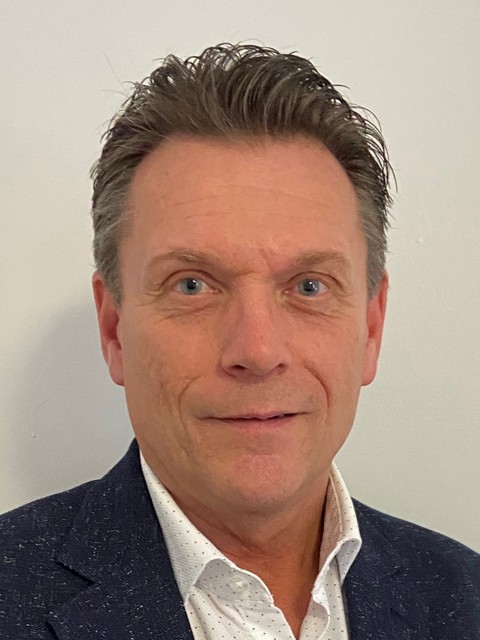 Darren started his career with Atomic Energy of Canada Limited (AECL) in 1989 at the Whiteshell Laboratories, and has extensive research and development (R&D) experience related to the development of CANDU reactor technology. Prior to becoming a Manager in R&D (2007) at the Chalk River Laboratories, he was Senior Scientist in the Materials and Mechanics Branch, Fuel Channels Division. Between 2000 and 2005 he took a sabbatical from AECL and was a Research Professor at Cambridge University, UK working in the Department of Engineering and at the Cavendish Laboratory. Darren has held many leadership roles within AECL R&D (now CNL S&T), and moved into the Deputy Vice President position in 2020 February.
Dr. Radford is a graduate of the University of Winnipeg, Applied Mathematics and Physics (B.Sc.); University of Manitoba, Mechanical Engineering (M.Sc.); and Carleton University, Mechanical and Aerospace Engineering (Ph.D.).
Darren started his career with Atomic Energy of Canada Limited (AECL) in 1989 at the Whiteshell Laboratories, and has extensive research and development (R&D) experience related to the development of CANDU reactor technology. Prior to becoming a Manager in R&D (2007) at the Chalk River Laboratories, he was Senior Scientist in the Materials and Mechanics Branch, Fuel Channels Division. Between 2000 and 2005 he took a sabbatical from AECL and was a Research Professor at Cambridge University, UK working in the Department of Engineering and at the Cavendish Laboratory. Darren has held many leadership roles within AECL R&D (now CNL S&T), and moved into the Deputy Vice President position in 2020 February.
Dr. Radford is a graduate of the University of Winnipeg, Applied Mathematics and Physics (B.Sc.); University of Manitoba, Mechanical Engineering (M.Sc.); and Carleton University, Mechanical and Aerospace Engineering (Ph.D.).
Abstract:
Canadian Nuclear Laboratories (CNL) stands at the forefront of nuclear innovation,
contributing to energy security, health, environmental safety, and security. This
presentation will provide an in-depth look into CNL's science and technology
capabilities, with a special focus on our high-performance computing. We will explore
how CNL's cutting-edge research, development, and strategic partnerships are driving
advancements in nuclear science and technology, including advanced reactors, and
non-proliferation safeguards. The talk will underscore CNL's commitment to solving
complex issues and advancing clean energy technologies for a sustainable future.
Dr. Emily Shemon, Argonne National Laboratory
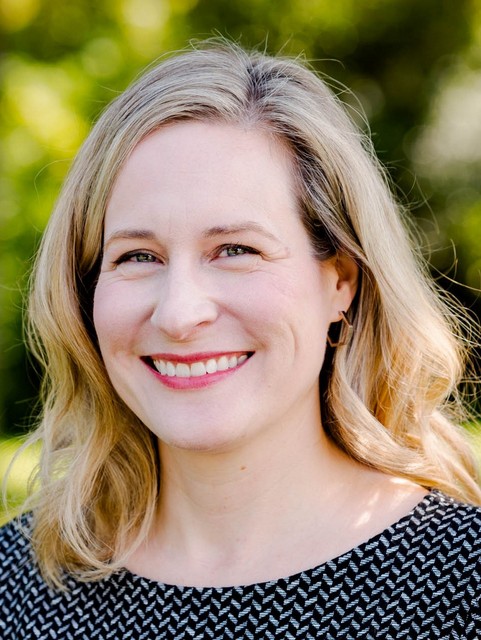 Dr. Emily Shemon is a Principal Nuclear Engineer at the United States Department of Energy's (U.S. DOE) Argonne National Laboratory and is affiliated with Argonne's Nuclear Science and Engineering Division and the Argonne Leadership Computing Facility. She currently coordinates nuclear reactor modelling and simulation multiphysics activities for the DOE's Nuclear Energy Advanced Modelling and Simulation (NEAMS) Program. The focus of her talk will be on U.S. Department of Energy investments in enabling advanced multiphysics simulations, as well as work to bring nuclear-related codes into the exascale computing era.
Dr. Emily Shemon is a Principal Nuclear Engineer at the United States Department of Energy's (U.S. DOE) Argonne National Laboratory and is affiliated with Argonne's Nuclear Science and Engineering Division and the Argonne Leadership Computing Facility. She currently coordinates nuclear reactor modelling and simulation multiphysics activities for the DOE's Nuclear Energy Advanced Modelling and Simulation (NEAMS) Program. The focus of her talk will be on U.S. Department of Energy investments in enabling advanced multiphysics simulations, as well as work to bring nuclear-related codes into the exascale computing era.
Abstract:
Over the past decade, the U.S. Department of Energy has made significant investments to multiphysics nuclear reactor modelling and simulation capabilities through the Nuclear Energy Advanced Modelling and Simulation Program (NEAMS), the Consortium for the Advanced Simulation of Light Water Reactors (CASL), and the Exascale Computing Project (ECP). Together, these investments have built up the ability to perform "grand challenge" multiphysics modelling of both light water-cooled and non-light water-cooled designs, as well as demonstrate speedup on the advanced computing architectures of tomorrow. These capabilities make the solution of complex, novel, and high computational intensity reactor problems increasingly feasible. This talk will focus on advanced multiphysics capabilities for non-LWR and LWR modelling as well as touch on some of the software capabilities being run at leadership scale.
Dr. Florent Heidet, Ultra Safe Nuclear Corporation
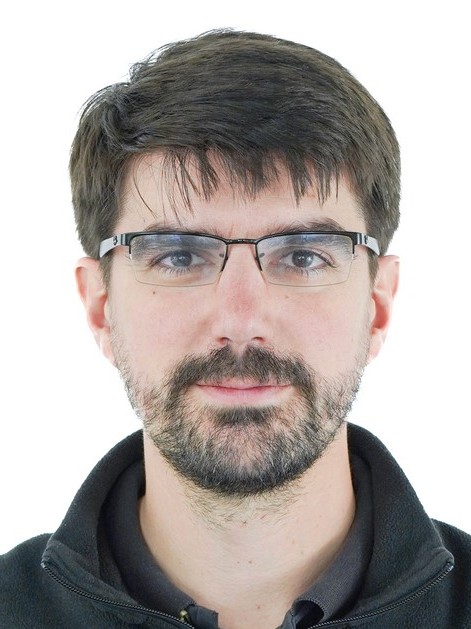 Dr. Florent Heidet is the Director of Innovation at USNC. He oversees the design of the Micro-Modular Reactor, which includes the core design, safety analysis, and methods & code development. Dr. Heidet is an expert on advanced reactor technologies. Before joining USNC, he worked at Argonne National Laboratory where he led many high-impact projects. He initiated the establishment of methods and tools for the analysis of molten-salt reactors, was the Argonne manager for the Transformational Challenge Reactor program and was in charge of the Versatile Test Reactor core design. Dr. Heidet has a proven track record of integrating teams with various expertise across several institutions, and efficiently delivery highly complex projects. Dr. Heidet obtained his Ph.D. in Nuclear Engineering from UC Berkeley in 2010. Dr. Heidet also served as an officer of ANS’s Reactor Physics Division for five years, which include a two-years tenure as the chair.
Dr. Florent Heidet is the Director of Innovation at USNC. He oversees the design of the Micro-Modular Reactor, which includes the core design, safety analysis, and methods & code development. Dr. Heidet is an expert on advanced reactor technologies. Before joining USNC, he worked at Argonne National Laboratory where he led many high-impact projects. He initiated the establishment of methods and tools for the analysis of molten-salt reactors, was the Argonne manager for the Transformational Challenge Reactor program and was in charge of the Versatile Test Reactor core design. Dr. Heidet has a proven track record of integrating teams with various expertise across several institutions, and efficiently delivery highly complex projects. Dr. Heidet obtained his Ph.D. in Nuclear Engineering from UC Berkeley in 2010. Dr. Heidet also served as an officer of ANS’s Reactor Physics Division for five years, which include a two-years tenure as the chair.
Abstract:
Over the last several decades, the nuclear community focused on advancing modeling & simulation capabilities. This resulted in a lot of new M&S development, which allows more detailed characterization of nuclear systems and understanding the various phenomena at play. Over the same period of time, there has been relatively little movement on the reactor design front, especially regarding commercial-level design of new advanced reactors, and therefore slow adoption of new M&S capabilities. Because of the strict pedigree requirements around codes used in support of licensing, reactors designers should remain pragmatic when using new codes and enhanced capabilities. This presentation will discuss how USNC is striking a balance in leveraging M&S capabilities as part of the design process while minimize risks associated with it.


